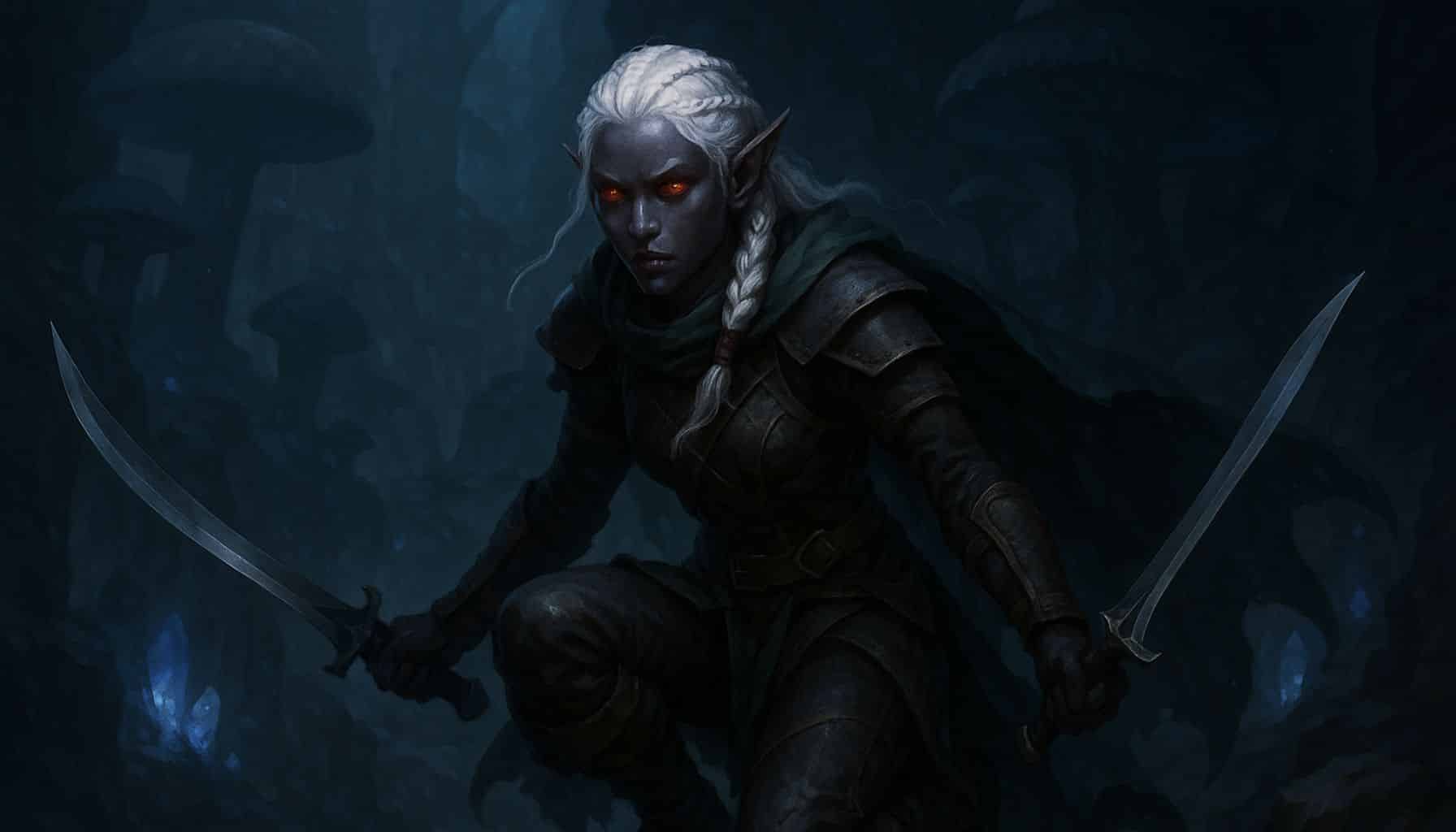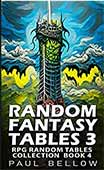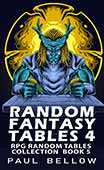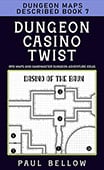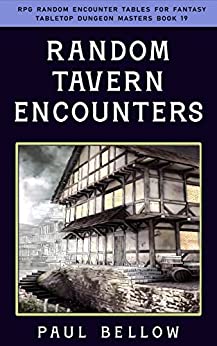There’s a reason, whispered in dice-laden basements and thundering at gaming tables across the world, that the Forgotten Realms occupy a throne at the heart of Dungeons & Dragons. Unlike settings that fade into generic fantasy, the Realms offer a living tapestry woven with myth, politics, and centuries of storytelling. For decades, adventurers have trekked through Waterdeep’s shadowed alleys, crept beneath Cormanthor’s haunted boughs, and braved the wild chaos of the Underdark. Even if you’ve just skimmed the surface, you’ve felt the tremors of its deep history and expansive narrative reach.
But what sets the Forgotten Realms apart isn’t just abundance—it’s resonance. Its sprawling cities, warring gods, and forgotten ruins contain a density of lore unmatched in fantasy RPGs. Each city square, lonely river valley, and arcane stronghold holds secrets cultivated by generations of writers and game designers. The Realms pulse with a sense of possibility, where every corner is pregnant with plots waiting to be unearthed. It’s a world where the past is never truly buried and where every campaign, taken seriously, can tap into veins of story gold. Check out our D&D backstory generator for more tips!
Yet, the Realms are often treated as wallpaper by Dungeon Masters and players alike. Many groups use it as a generic fantasy backdrop, sprinkling a few iconic names and splashy magic items without diving into the tangled roots beneath the surface. This is understandable; who has time to memorize centuries of in-game history or a pantheon of squabbling gods between scheduling sessions and wrangling character sheets? But by staying in the shallow end, legions of players unknowingly miss out on the unique power the setting offers: its ability to transform games from cookie-cutter dungeoncrawls into dynamic stories steeped in legend.
This article isn’t just an ode to nostalgia or nerdy gatekeeping. It’s a rallying cry—an invitation to peek behind the curtain and see how deep engagement with Realms lore can electrify your campaign. By drawing from its secrets, DMs and players can breathe life into the familiar, grounding their adventures in a setting that feels authentic, storied, and rich with unexpected possibilities. If you’re ready to weave your tale into the endless tapestry of Faerûn, read on—because with just a bit of lore-steeped knowledge, the Forgotten Realms can become the setting for unforgettable adventure.
The Hidden Depths of Faerûn
Faerûn, the primary stage of the Forgotten Realms, is a continent layered like ancient rock with the sediment of ages. Its foundations are riddled with traces of vanished empires, shrouded deities, and cataclysms that continue to mold its fate. The land’s surface is dynamic and vibrant—a bustling mix of powerful city-states, wild frontiers, and enchanted wilderness—but to truly understand it, one must peer beneath, delving into millennia of slowly accreted stories. Every region carries the scars and secrets of its past, from the devastated ruins of Netheril to the cryptic mosaics in Calimshan’s oldest temples.
The Realms have endured a succession of world-shaping events, each leaving indelible marks. The Time of Troubles, where gods walked the earth and divine magic went haywire, shattered not just pantheons but also the mortal understanding of fate and power. The Spellplague tore the magical fabric of existence itself, annihilating kingdoms, rewriting the very laws of spellcraft, and infusing the land with unpredictable energies. The Sundering, a more recent upheaval, altered continents and restored much that was unmoored—offering both hope and fresh uncertainties.
Try my AI Tabletop RPG generators...and an extensive library of content!
These epochs don’t just gather dust in library tomes—they bleed into every present-day adventure. Haunted castles may conceal relics from the Shoon Imperium, while countryfolk pass down warnings shaped by ancient epic wars or divine betrayals. What at first appears as mere superstition or local folklore often masks fragments of these deeper truths. Dungeon Masters who dig into these layers can unearth seeds for adventure: a prophecy mingled into a bard’s tune, an artifact humming with forbidden power, or a cult worshipping a god thought long dead.
The genius of Faerûn’s design is that it rewards curiosity, inviting storytellers to transform forgotten ruins and minor footnotes into campaign-defining plotlines. Ancient secrets serve as inexhaustible wells for Dungeon Masters aiming to surprise even their most lore-savvy players. Instead of running yet another generic dungeon crawl, you’re drawing from a tapestry where every shadowed corridor and overgrown monument hints at tangled histories. For those willing to excavate and adapt these hidden stories, the Realms become a playground limited only by imagination.

Mythology, Gods, and Divine Drama
One of the secret engines powering every tale in the Forgotten Realms is its chaotic, intertwining pantheon of gods. Divine presence is not an abstract notion or mere flavor text slapped onto cleric spells. In the Realms, gods walk the world, war with one another, and meddle in mortal affairs with both subtlety and brute force. Their rivalries and romances, betrayals and redemptions, ripple down from the heavens into every village, temple, and hero’s soul. This divine drama doesn’t just raise the stakes—it offers DMs a boundless source of story, tension, and awe.
Gods in the Forgotten Realms play politics more intricate than any mortal court. They have motives, favorites, vendettas, and ambitions. For every devout priest or secretive cult, there’s a plot unfolding—one that may ensnare the unwitting or ambitious. The Time of Troubles famously saw the gods cast into mortal shells, forever altering their relationships and reshaping mortal perceptions of faith. Later wars among the divine continue to ripple outward, spawning new champions, curses, and relics that drive adventures centuries after the battles have faded into legend.
⚔️ Fantasy RPG Random Tables Books
Make life as a Gamemaster easier…
If you play Dungeons & Dragons, Pathfinder, or other fantasy RPGs, this
RPG random tables series
is packed with encounters, NPCs, treasure, and more. Available in eBook or print—either way, you’ll have a wealth of adventure ideas at your fingertips.
Clerics, paladins, and even the faithless are all pawns—sometimes players—in this cosmic game. Divine champions might wander the world in disguise, changing the fates of those they meet. Artifacts borne from godly conflicts (such as the mysterious Tablets of Fate) can appear in mortal hands and trigger cascading consequences. Even minor prayers or omens can foreshadow great turmoil when, say, Tyr’s church splits over an ancient doctrinal dispute or Mask quietly resurrects a lost trickster order. DMs who sprinkle in hints of divine maneuvering summon an omnipresent tension that electrifies the world.
Just a few well-chosen divine secrets can transmute the tone of a campaign, infusing mundane quests with elements of prophecy, destiny, and the unknown. Is that cursed relic merely a danger, or is it a sliver of Mystra’s shattered essence, waiting for the right touch to reignite ancient wars? Does the local temple’s schism echo an ongoing feud between rival gods, with the fate of entire cities hanging in the balance? Through careful use of godly intrigue, every player action can feel connected to a larger, celestial stage.
Divine Elements and Stories for DMs:
- The bitter rivalry and redemption arc between Lolth and Eilistraee, warring over the souls of the drow.
- The resurrection, fall, and mysteries of Mystra, goddess of magic, and the consequences for arcane casters.
- Cyric’s rise, madness, and catastrophic ambitions after stealing the portfolios of other gods.
- The twin influences of Tyr and Helm in matters of justice, vengeance, and protection.
- The shifting allegiances between Lathander (god of dawn) and Amaunator (god of the sun).
- Oghma and Deneir’s silent battle for the preservation—and rewriting—of knowledge.
- Kelemvor’s uneasy stewardship over the dead, beset by cultists of Myrkul and undead lords.
- Divine champions such as chosen ones of Mystra, moving secretly to secure her magic.
- Ancient relics touched by the Time of Troubles, each holding unpredictable power or curses.
- Cults that secretly worship Bhaal, plotting assassinations and sowing terror in the name of murder.
- Waukeen’s return after captivity, rekindling economic wars among trade guilds and merchant dynasties.
- Torm’s martyrdom and its echoes in knightly orders across the Realms.
- Gods appearing in mortal disguise, testing the worth (and wit) of adventurers.
- Tyranny of Ao the Overgod—rarely seen, but always looming as an arbiter of cosmic order.
- Prophecies inscribed by Savras, now hunted by thieves and scholars alike.
Divine lore begs for more than set dressing; it thrums at the core of drama, offering endless avenues for prophecy, conflict, and destiny. Even the faintest rumor of godly intervention can upend a session, sending players racing to discover the real stakes of their quest. Divine feuds and blessings provide a framework for intrigue that feels enormous yet intimately connected to the heroes’ choices.
By weaving in threads of godly intrigue or celestial meddling, you give your campaign layers of tension and surprise. Whether you introduce a relic cursed in the Time of Troubles, have an NPC whisper a forgotten prayer, or throw a scheming demigod into the mix, each element grounds your story in the grand tapestry of Faerûn. For players, feeling fate’s hand at their shoulder—not just the DM’s—raises the stakes and invites them to shape (or defy) legend itself.
Regional Lore That Changes Everything
Every stretch of the Forgotten Realms is its own crucible of drama, culture, and conflict. Waterdeep teems with intrigue, noble houses, and guild rivalries that can topple a city without a sword being drawn. The Dalelands seethe with legends of ancient forests and neighborly feuds sharpened over centuries. Chult is rife with dinosaurs, deadly jungles, and the looming shadow of the undead, while Thay broods as a nation of wizards ruled by Szass Tam and his red-robed liches. Each region hums with its own tempo and tale—choosing one as your campaign’s focus isn’t limiting, it’s liberating.
Instead of bouncing aimlessly across the map, grounding your campaign in a single region allows its unique flavor to infuse every encounter. The political maneuvering of Waterdeep’s Lords’ Alliance feels worlds apart from the tribal warfare and resource struggles in the Anauroch Desert. Even smaller locales, like the bustling port of Baldur’s Gate or the frost-bitten Ten-Towns, come with their own idiosyncrasies, taboos, and legendary figures. By digging into these local details, you create a sense of place that transcends generic fantasy.
Regional histories are raw material for campaign hooks. The restless dead of Thay, the imperial ambitions of Amn, or the wild magic storms roaming Halruaa all offer storylines that grow organically from the land. Local legends—like a dragon sleeping beneath a mountain, or a haunted barrow desecrated during the Spellplague—give adventurers seeds of adventure specific to that place. The stakes become personal: it’s not just treasure being won or lost, but the fate of home, heritage, and those who live there.
Don’t be afraid to embrace regional politics, trade wars, or environmental crises as central axes of your campaign. Maybe your party is entangled in a merchant war in Calimport, or navigating the race for magical artifacts in Silverymoon’s shadow. Even a single region, well explored, offers more depth than a dozen generic kingdoms. These details turn backdrop into battleground, transforming the Realms into a vibrant reality that’s both fascinating and familiar.
| Region Name | Key Feature/Tension | Campaign Hook Idea | Important NPCs |
|---|---|---|---|
| Waterdeep | Noble intrigue, criminal underworld | Solve a string of high-profile heists orchestrated by rivals | Laeral Silverhand, Jarlaxle Baenre |
| Dalelands | Border feuds, ancient elven ruins | Prevent a forgotten curse from awakening in the woods | Elminster, Randal Morn |
| Chult | Jungle wilderness, undead menace | Retrieve a lost artifact from the depths of the jungle | Syndra Silvane, Artus Cimber |
| Thay | Lich rule, magical oppression | Sabotage a Red Wizard ritual threatening a nearby nation | Szass Tam, Yaphyll |
| Amn | Merchant rivalry, hidden cults | Uncover a secret cabal controlling trade and politics | Eldrith Jassan, Pericolo Topolino |
| Baldur’s Gate | Corrupt government, smuggling | Investigate disappearances tied to a mysterious cult | Duke Ravengard, Liara Portyr |
| Cormyr | Royal succession, monster outbreaks | Escort a claimant to the throne through monster-infested lands | Azoun IV, Vangerdahast |
| Icewind Dale | Harsh climate, resource scarcity | Broker peace between rival settlements facing starvation | Speaker Shane, Vaelish Gant |
| Underdark | Drow plots, alien environments | Escape or broker alliances in the twisted depths | Matron Baenre, Drizzt Do’Urden |
| Silverymoon | Magical academia, city-state alliances | Protect the city from magical sabotage during festival time | Alustriel Silverhand, Taern Hornblade |
Letting a campaign thrive within a single region fosters emotional connections for players. When their actions alter the political landscape or save a struggling village, the effects feel meaningful and immediate. It roots player investment, allowing them to become more than adventurers—they become citizens, saviors, or even monsters of the places they call home.
In the end, a single well-detailed region yields an infinite variety of storylines, conflicts, and mysteries. DMs who make the effort to invest in local flavor and NPCs discover that players respond in kind, forming deep bonds (and rivalries) with the world. It’s the surest way to breathe authenticity into the Realms and ensure that your campaign remains vivid in memory long after the dice go silent.
Magic Systems, Artifacts, and Arcane Secrets
Magic in the Forgotten Realms is both a tool and a torment, a vibrant force that shapes geopolitics and personal destinies alike. The Weave—the living web of magical energy presided over by Mystra—underpins every spell, item, and arcane tradition. But it’s not uniform: Halruaan skyships soar above storm-wracked lands, while Thay’s necromancers twist power with sinister intent. Across Faerûn, secretive organizations, wild sorcerers, and power-hungry mages vie for supremacy, each leaving their mark on magical history.
⚔️ Fantasy RPG Random Tables Books
Make life as a Gamemaster easier…
If you play Dungeons & Dragons, Pathfinder, or other fantasy RPGs, this
RPG random tables series
is packed with encounters, NPCs, treasure, and more. Available in eBook or print—either way, you’ll have a wealth of adventure ideas at your fingertips.
Iconic groups like the Harpers, the Red Wizards of Thay, and the shadowy Zhentarim aren’t just background color but active forces with their own rivalries, missions, and hidden agendas. The Harpers quietly subvert tyranny, nudging heroes toward heroism or revolution. The Red Wizards plot to expand their undead empire, often crossing swords (and spells) with parties who get in their way. Zhentarim agents slither through the underworld, dealing in forbidden artifacts and secrets for the right price. Each group gives DMs a ready-made network of allies, rivals, and escalating threats.
Artifacts in the Realms aren’t mere loot; each comes with a legacy and a price. The Nether Scrolls offer knowledge that can shatter or create empires, tempting mages and dooming the unworthy. The Crown of Horns whispers madness into the mind of its wearer—legend has it that even the gods once trembled at its power. Mythal fields (ancient, city-sized spells) and shadowy strands of the Shadow Weave provide a bottomless well of magical plot hooks, dangers, and mysteries for daring adventurers.
This breadth of magical tradition turns every trek through the Realms into a potential saga of arcane enlightenment or woe. By weaving magical organizations and legendary relics into your campaign, you offer not just power for its own sake, but mysteries to solve, lines to cross, and ancient wisdom to uncover. Questing for lost magic is never just about the prize—it’s about how the pursuit leaves its mark on souls and societies alike.
Forgotten Realms Magical Groups, Artifacts, and Systems:
- The Weave (Mystra’s tapestry of magic)
- The Shadow Weave (Shar’s forbidden, dangerous counterpart)
- Mythals (ancient, city-sized magical fields)
- The Harpers (secret fraternity dedicated to fighting tyranny)
- Red Wizards of Thay (necromancer cabal bent on conquest)
- Zhentarim (underworld trade syndicate and snake-tongued spies)
- The Nether Scrolls (ancient, reality-altering tomes of magic)
- The Crown of Horns (cursed artifact that grants mighty power and madness)
- Halruaan Skyships (arcane airships from a reclusive land of magicians)
- Arcane Brotherhood (wizards seeking power at any cost, headquartered in Luskan)
- Spellguard (guards and enforcers of Silverymoon’s magical secrets)
- Artificers of Lantan (masters of invention, clockwork, and smokepowder)
- Sembian Shadowmasters (rogue wizards weaving spells for profit)
- The magic of ancient Imaskar (lost empire known for its mighty, reality-altering spells)
Don’t rely on magic merely as a means of escalating power or doling out treasure. Use it to evoke wonder, dread, or awe. A spell book found in a sunken ruin could change the fate of nations, while a cursed ring might tie its bearer to a forgotten divine prophecy. Magical mysteries are opportunities for existential questions, dramatic betrayals, and world-altering revelations.
In the Forgotten Realms, magic is never just a tool; it’s a force interwoven with history, divine will, and mortal ambition. Encourage players to chase incredible discoveries, but also to fear what lies at the limits of comprehension. In doing so, you’ll ensure that every magical moment in your campaign is memorable not just for its flash, but for its echo in the hearts and minds of your table.
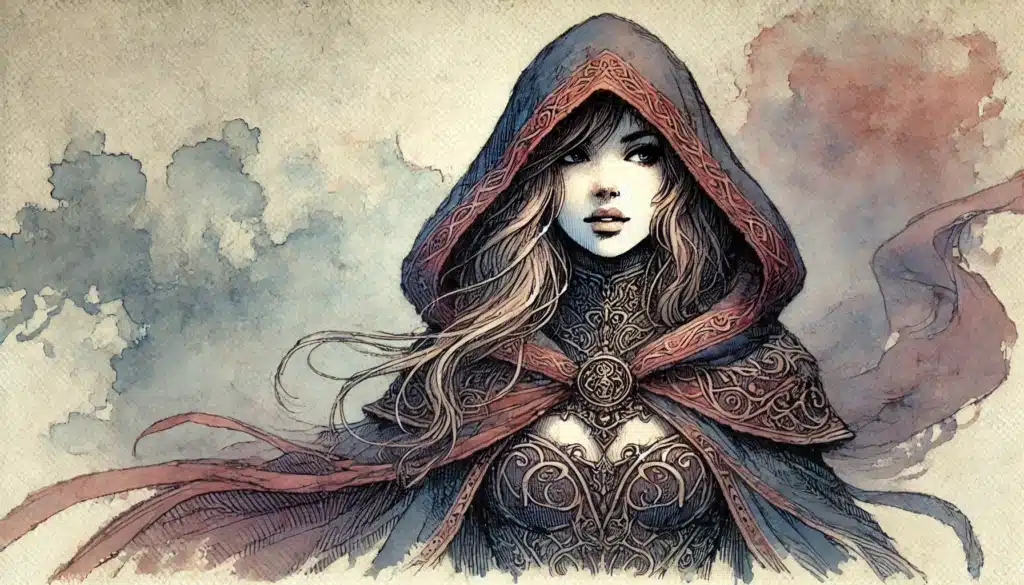
Famous Characters and Their Stories
Some legends in the Forgotten Realms stride so large that their names inspire awe, dread, or curiosity in equal measure. Elminster, the Sage of Shadowdale, is both trickster and oracle, meddling in the affairs of kings and peasants alike. Drizzt Do’Urden, the drow outcast and hero of the North, walks the fine line between monster and savior, his tales spawning a thousand imitations and debates. Volo, the egg-headed explorer and self-proclaimed expert on everything, has unwittingly caused as much chaos as he’s cataloged. Szass Tam, the lich lord of Thay, haunts nightmares with dreams of conquest and apocalyptic schemes.
These aren’t just legacy figures—they’re living parts of the world, whose actions and reputations shape the expectations, fears, and hopes of everyday folk. Even a rumor that Elminster is meddling in local politics can spark a frenzy of paranoia or hope. Drizzt’s sporadic appearances inspire drow and surface dwellers alike to question their own assumptions. Volo’s “authoritative” guides seed confusion (and adventure) wherever they end up, while Szass Tam’s machinations drive campaigns as large as wars and as small as curses whispered in the night.
Try my AI Tabletop RPG generators...and an extensive library of content!
In gameplay, famous Realms characters can serve as cameo appearances, quest-givers, rival adventurers, or behind-the-scenes manipulators. A letter from Alustriel Silverhand can open doors otherwise closed; a fleeting glimpse of Laeral Silverhand walking the streets of Waterdeep can legitimize the stakes of a quest. The challenge is to use these figures not as distractions or deus ex machina, but as flavor—context that cautions, inspires, or vexes your players. Their presence weaves the players’ story into the broader mythos, making the setting feel vast and interconnected.
Let these legends inspire, not overshadow, your heroes. New players might feel intimidated the first time they meet Minsc and Boo or hear tales of Artemis Entreri, but this is your cue: set your campaign on a path where ordinary mortals can brush shoulders with history—and, perhaps, carve out a legend all their own. Established characters provide a metric and a legacy; your party, with luck and grit, can become the next whispered name in a bard’s ballad.
Iconic Forgotten Realms Characters:
- Elminster Aumar (sage, meddler, and advisor; use for mystical guidance or cryptic intervention)
- Drizzt Do’Urden (champion of the North; encounter as inspiration or unlikely ally)
- Volo Geddarm (eccentric travel writer; quest-giver or inadvertent troublemaker)
- Szass Tam (lich, ruler of Thay; campaign villain or enigmatic power-broker)
- Laeral Silverhand (Open Lord of Waterdeep; political patron or reluctant helper)
- Minsc and Boo (heroic ranger and his miniature giant space hamster; comic relief or inspiration)
- Alustriel Silverhand (ruler of Silverymoon; wise contact or quest-giver)
- Artemis Entreri (deadly assassin; foil or dangerous rival)
- Khelben “Blackstaff” Arunsun (archmage of Waterdeep; secretive guide or enforcer)
- Larloch (undead Netherese archmage; a source of forbidden magic and ancient secrets)
- Jarlaxle Baenre (drow mercenary leader; potential ally or adversary in the shadows)
- Halaster Blackcloak (mad mage of Undermountain; architect of dungeon mayhem)
Used wisely, these legendary figures challenge players to rise above their own limits. The presence of giants in the world doesn’t diminish player agency—it sets a standard and a history to outdo. Encounters, alliances, or even rumors about these NPCs encourage the party to think bigger, strive harder, and maybe—just maybe—make their own indelible mark on the Realms.
Ready-made legends and the ever-present promise of mythic company or competition bring the setting to life with energy and gravitas. Whether your heroes aim to outwit the masters of Waterdeep, unearth the secrets of Halaster’s lair, or simply get Volo to write something truthful for once, they’re surrounded by opportunity. Let history’s footprints guide—and dare—your campaign into greatness.
How to Bring Forgotten Realms Lore into Your Campaign
Wielding Forgotten Realms lore isn’t about overwhelming your table with encyclopedic detail. The secret is to start small: choose one or two elements—a deity’s symbol, an ancient ruin’s backstory, the name of a legendary NPC—and slip them into your sessions. Curious players will naturally ask questions, pulling the lore deeper into their own stories. It’s a gentle, organic process that builds confidence in both you and your group.
Even the smallest details can elevate your campaign from the generic to the authentic. A passing mention of the Spellplague’s scars, a bard’s song about the fall of Myth Drannor, or a bickering priest quoting conflicting dogmas—these moments anchor your game in a living world. Over time, you can layer in more history, revealing how every city square and weathered artifact connects to a greater story.
As your comfort with the lore grows, so does your ability to hook players into the Realms’ giant mythos. Resist the urge to info-dump; instead, let discoveries unfold naturally as your party investigates, explores, and interacts with the setting. Soon, what started as flavor will evolve into the engine that drives personal stakes and unforgettable adventures.
Customizing Canon Without Breaking It
The beauty of Forgotten Realms lore is that it’s meant to be bent, twisted, and reframed to suit your group’s needs. Canon is a foundation, not a prison. Feel free to shake up events, reinterpret gods, or invent new local legends that tie into your own campaign’s themes. The Realms’ convoluted timelines and shifting continents almost demand creative license—they provide a playground for “what if” scenarios every bit as valid as the written histories.
Adapting canonical events is a powerful way to connect your table’s story with epic world-shaking drama. Maybe the Time of Troubles ended differently, or the Spellplague’s aftershocks are still being felt in new ways. You can blend regions, change political climates, or even let a forgotten town rise to unexpected prominence as a new trade hub, secret cult center, or magical university. Play with familiar figures—perhaps Elminster vanishes, leaving a wizarding power vacuum, or Drizzt is framed for a crime and your party must clear his name.
Don’t be afraid to rename gods or regions for dramatic effect. Your campaign’s version of Faerûn could have a new villainous cult, a sunken city that never existed in the “official” lore, or even a new pantheon drawn from the faiths of your party’s adventurers. Use “what if” questions to spark adventures that feel both true to the spirit of the Realms and unique to your table.
Most importantly, empower your players by making their choices matter. Let them change the fate of a city, slay a legendary monster, or even ignite a divine schism. The Realms are enormous; they can easily contain your tweaks, flourishes, and reinventions. Canon becomes not an obstacle, but inspiration for deeper, more personal play.
Ways to Customize Forgotten Realms Lore:
- Create alternate timelines where major events (Spellplague, Sundering) ended differently
- Blend features or politics from two regions into a hybrid setting
- Rename gods or invent new local deities for flavor
- Introduce “lost” NPCs from published lore as campaign villains or mentors
- Transform minor canon relics into major plot-driving artifacts
- Establish new organizations or secret societies in familiar cities
- Change the ruling power structure or government in a region
- Flesh out unexplored regions or invent new borderlands
- Add “what if” scenarios based on Realms history (e.g., Mystra never resurrected)
- Reimagine published modules with changed threats or altered goals
- Position your PCs as descendants (or enemies) of famous lore figures
- Make non-human races or cultures central to regional politics, despite canon
By boldly personalizing the Realms, you signal to your table that this is not just Forgotten Realms—it’s yours. Your reinterpretations add freshness, surprise, and buy-in, creating a sense of ownership and discovery that will infuse every game session with energy.
Far from breaking the setting, customization is its true lifeblood. The Realms have always been a patchwork of stories, legends, and secrets, waiting for new voices to add their mark. Make it yours and watch it flourish.
Tools and Resources for Forgotten Realms Mastery
Conquering the breadth of the Realms takes more than studio-published sourcebooks. A Dungeon Master’s greatest secret is knowing which tools open doors without overwhelming the mind. Start with core campaign guides—they offer concise, game-friendly overviews of lands, magic, and key lore events. Then branch out to specialized volumes, like “Volo’s Guide to Waterdeep” or “Lost Empires of Faerûn,” to fill in the detail for your chosen region or theme.
Novels, too, are potent resources, not just for story ideas but for immersing yourself in the world’s voice and culture. R.A. Salvatore’s Drizzt series, Ed Greenwood’s Elminster novels, and the Sundering event books drip with flavor, character, and lived-in worldbuilding. Online wikis and fan sites, like the Candlekeep Forums or the Forgotten Realms Wiki, serve as constantly updated repositories for obscure trivia, timelines, and NPC profiles—handy for those late-night, last-minute prep sessions.
Maps and timelines are essential for grounding your story in both space and time. Official cartography, like the “Forgotten Realms Interactive Atlas” or Mike Schley’s region maps, can help situate players, track journeys, and spark adventure ideas. Character trees, which chart relationships between lore figures, are excellent for tracking political drama and foreshadowing who might emerge as a patron or antagonist in your game.
⚔️ Fantasy RPG Random Tables Books
Make life as a Gamemaster easier…
If you play Dungeons & Dragons, Pathfinder, or other fantasy RPGs, this
RPG random tables series
is packed with encounters, NPCs, treasure, and more. Available in eBook or print—either way, you’ll have a wealth of adventure ideas at your fingertips.
Community tools, such as Reddit’s r/Forgotten_Realms or Discord channels, offer advice, ready-to-use plot hooks, and a sounding board for your wildest campaign twists. Engaging with other DMs helps keep your ideas fresh, and you’ll often discover answers to questions you hadn’t even thought to ask. Remember: the best resources are those you’ll actually use, not those that gather digital dust on a hard drive.
| Resource Name | Best For | Where to Find |
|---|---|---|
| Forgotten Realms Campaign Setting (3e/5e) | Core lore & overview | Official book, game stores, DMsGuild |
| Volo’s Guide to Waterdeep | Urban adventure, city lore | Book, DMsGuild |
| Lost Empires of Faerûn | Ancient ruins, history | Print, PDF (DMsGuild) |
| Drizzt Do’Urden novels | North, drow, adventuring | Bookstores, libraries, eBook platforms |
| Elminster novels | Magic, politics, myth | Bookstores, libraries |
| Forgotten Realms Wiki | Quick reference, trivia | https://forgottenrealms.fandom.com |
| Candlekeep Forum | Community Q&A, deep dives | https://forum.candlekeep.com |
| Mike Schley Maps | Regional/urban maps | https://mikeschley.com |
| Forgotten Realms Interactive Atlas | Comprehensive maps, journeys | Out-of-print; PDFs online |
| r/Forgotten_Realms Reddit | Community advice, plot hooks | https://reddit.com/r/forgotten_realms |
Studying these resources—casually or obsessively—pays off with confidence and storytelling flair at the table. Even a single nugget of lore can transform a session, surprising your players and cementing the setting in their memories for years to come.
In the end, mastery isn’t about memorization. It’s about knowing where to look, how to adapt, and how to share discoveries with your group. Whatever resources you choose, let them empower you to tell the most vivid, unpredictable stories Faerûn has ever seen.
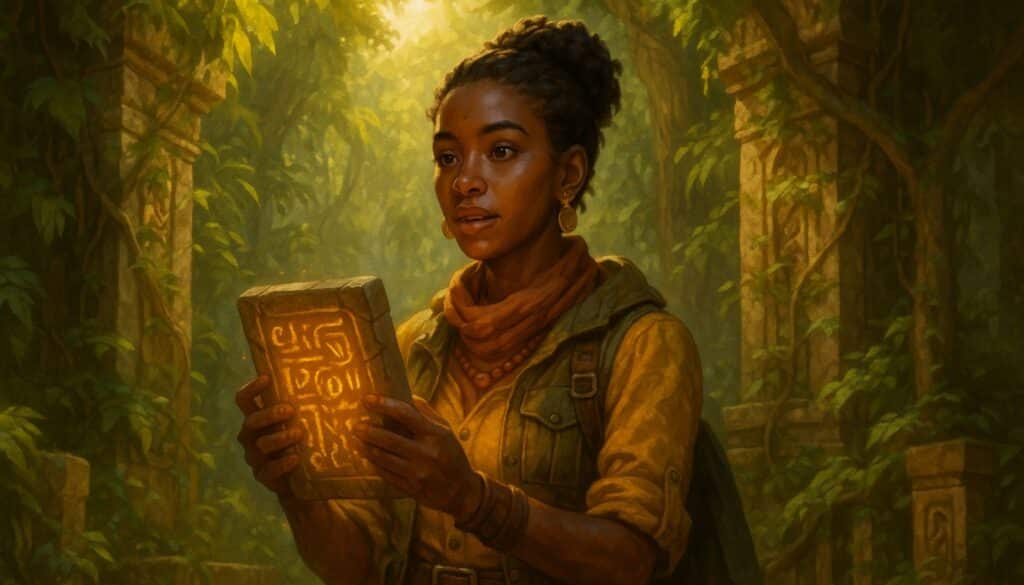
Final Thoughts on the Forgotten Realms’ Power
It’s all too easy to treat the Forgotten Realms as the default, the vanilla setting that comes pre-packaged with every new edition of Dungeons & Dragons. But that view underestimates the richness and scale the Realms offer. Beneath even the most mundane seeming settlement lies a bedrock of stories, ancient secrets, and godly ambition that can drive campaigns for years. Each corner—whether forest, city, or ruin—beckons with the promise of undiscovered mystery and potential. The Realms are more than a map; they’re a living narrative, ready to unfurl beneath your table’s collective imagination.
What makes the Forgotten Realms special isn’t just its history or its impressive list of deities and personalities. It’s the way its lore feeds storytelling, rewarding curiosity and risk-taking. Players don’t just wander through castles; they inhabit worlds where every choice, prayer, or stray rumor might echo through legends thousands of years old. DMs don’t merely pull from a grab-bag of generic quests—they write in the margins of a mythos vast enough to contain any surprise they can invent.
Campaigns set in the Realms never feel static, because the setting itself constantly shifts. Divine plots, magical cataclysms, ancient returns, and mortal ambition propel the world forward, ensuring your players always have something new to discover. Whether your table craves political intrigue in Waterdeep, desperate survival in Chult, or arcane mystery in Thay, there’s always another layer to peel back. And with every session, your campaign adds a new stitch to Faerûn’s tapestry.
Ultimately, the Forgotten Realms offer a rare blend of depth and flexibility. Use as much or as little as you want, remixing canon, tweaking timelines, and building legends of your own. No matter how you play, the setting has room for you and your group to grow—ensuring every campaign feels both grounded in classic myth and utterly unique.
So dive in for yourself. Stir up that lore, plumb the world’s secrets, and challenge your players to make their mark. The Realms will always have room for new heroes, new villains, and new stories. This isn’t just a playground for nostalgia—it’s a forge for unforgettable adventure. Embrace the lore, write your legends, and claim your place in the living, ever-changing epic of Faerûn.

